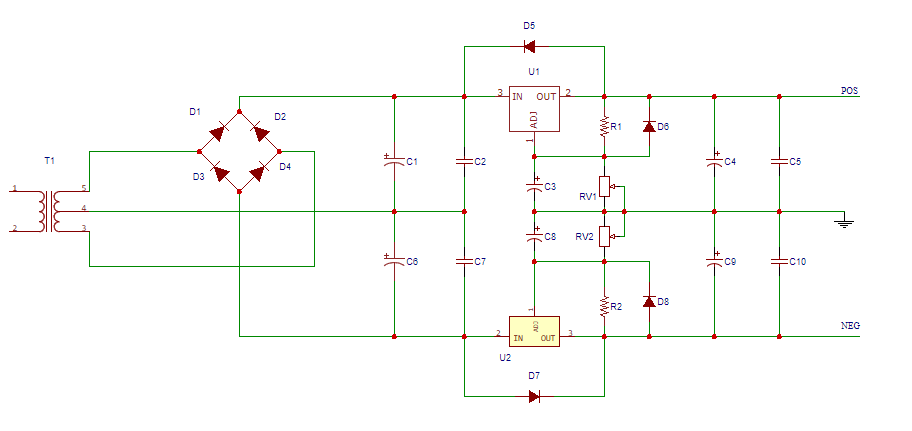I think John gave you the clue: in your schematic, once you tie those nodes together, then what is the difference? It looks that way, because, in the schematic, it's one single node that has zero ohms resistance, so, by definition, all points along that node are at the same potential, regardless of the amount of current flowing.
But that isn't really what is happening: that "ground" line has a (small) resistor in-between each and every connecting node: thus, it isn't a smooth zero-ohm connection like the schematic depicts. There is a resistor between the center tap and C1/C8...there's another resistor between C1/C6 and C2/C7, and yet another between C2/C7 and C8/C8. The magnitude of these resistances are defined by the copper losses in the real wiring, and these resistances mean there are "new nodes" along the ground path.
Go ahead and draw those in, then you'll understand that each of those create new nodes that are all (in reality) at different potentials based on the current flowing through the trace(s) at those points. It also renders obvious your questioning about where to connect further "grounds" into this matrix of "new nodes".

































